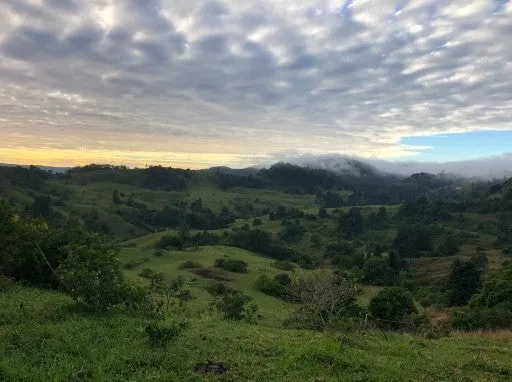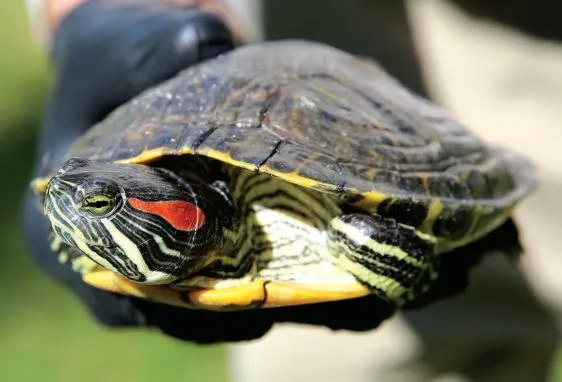Coastal fox control program
The coastal fox control program (CFCP) is working to protect native animals and the community from foxes. Read more about foxes and their impacts.
The CFCP is a collaboration between council, Queensland Parks and Wildlife, Coolum and Northshore Coast Care, Noosa Shire Council, Sunshine Coast Airport and landholders. It was implemented in response to community concerns about the impacts of foxes.
The program is working to protect endangered spotted-tail quoll, green and loggerhead turtle hatchings as well as vulnerable water mouse and eastern ground parrot.
Target species
European fox (Vulpes vulpes)
Schedule
Trapping: 22 April 2025 to 27 June 2025 (10 weeks)
Chemical control: 14 April 2024 to 24 March 2025 (49 weeks)
Fox den season: Mid-August to End of November (14 weeks)
Location
Fox control is undertaken in areas of known fox activity in coastal areas between the Maroochy River and Peregian Beach. The program area includes council-managed and state-managed lands as well as some private properties. View a map of current properties (PDF, 4.6MB).
Note: Control activities are not undertaken on public pathways, roadsides; within five metres of a boundary fence; or within 200 metres of designated dog off-leash areas.
Get involved
Contact council if you would like your property to be part of the program. You can also assist by reporting fox dens to council. Learn more about identifying a fox den.
Protection methods
Chemical control
Chemical control
- Canid pest ejectors (spring-activated baiting devices) are used to control foxes in areas of known activity
- Ejectors are installed across selected bushland areas and private properties within the program area. They are not placed in coastal dunal areas
- Ejectors are baited either with Sodium Fluoroacetate (1080) or Para-aminopropiophenone (PAPP), both are restricted pesticides
- A regulatory risk assessment is undertaken prior to placement of canid pest ejectors on any property
- All properties located within 500 m of an approved property are notified prior to commencement of control activities
- Warning signs are placed at the entrances to properties where canid pest ejectors are in place
- Control activities are conducted by qualified and experienced invasive animal officers. Officers operate under council’s policies and procedures and in line with Queensland's animal welfare laws.
1080 is considered the most species-specific pesticide for controlling invasive species. For more information about 1080, view the Department of Agriculture and Fisheries 1080 fact sheet. PAPP has also been shown to be a successful and humane pest control toxin. Information about PAPP and detailed information for protecting your domestic animals from accidental poisoning can be obtained on the Pest Smart website.
Note: Canid pest ejectors cannot be trans-located by animals. However domestic pets may be at risk if allowed to roam. It is an offence to allow a cat or dog to roam outside of its property. Read about responsible dog and cat ownership.
Fox den detection
Fox den detection
- Fox dens are located annually with assistance from den detection dogs. Dogs are specially trained to signal whether a den is active or inactive
- Dens may also be located by community members and reported to council
- Active fox dens are fumigated in line with Queensland's animal welfare laws.
Monitoring
Monitoring
- Extensive monitoring is undertaken all year round for the coastal fox control program
- Motion detection cameras are used in both dunal areas, national parks and council reserves
- Cameras are used to capture invasive animal and native animal activity to determine the program's effectiveness
- These cameras are locked, GPS recorded and only authorized officers view this camera footage
- Please respect this program and please don't touch the cameras.
Trapping
Trapping
- Soft-catch foothold traps are used to control foxes in areas of known fox activity
- Traps are placed across selected bushland areas and private properties within the program area
- Warning signs are placed at the entrance of properties undertaking trapping
- Where trapping is occurring on council land, warning signs are erected in the immediate vicinity of trapping sites
- Traps are checked daily or continuously by telemetry camera
- Target species trapped on council land are euthanized by an authorised officer
- Control activities are conducted by qualified and experienced invasive animal officers. Officers operate under council’s policies and procedures and in line with Queensland's animal welfare laws.
Note: Domestic pets may be at risk if allowed to roam. It is an offence to allow a cat or dog to roam outside its property. Read about responsible dog and cat ownership.


